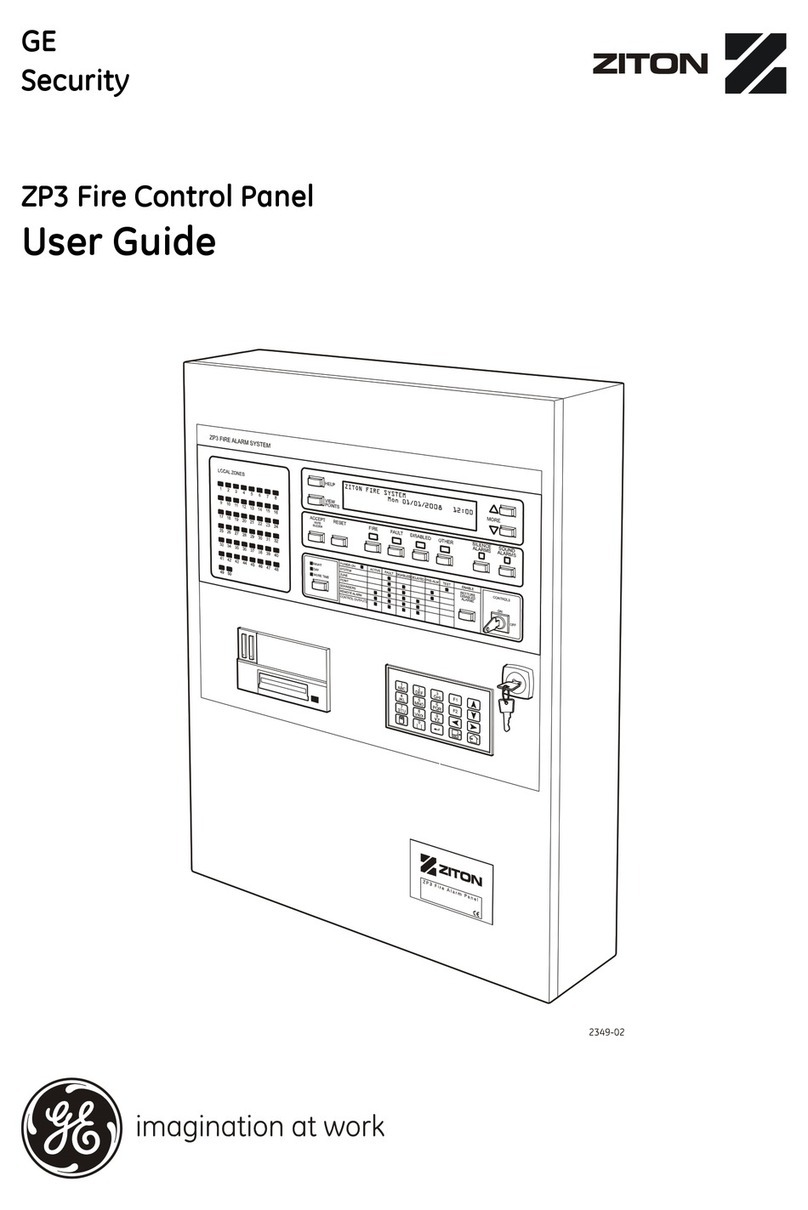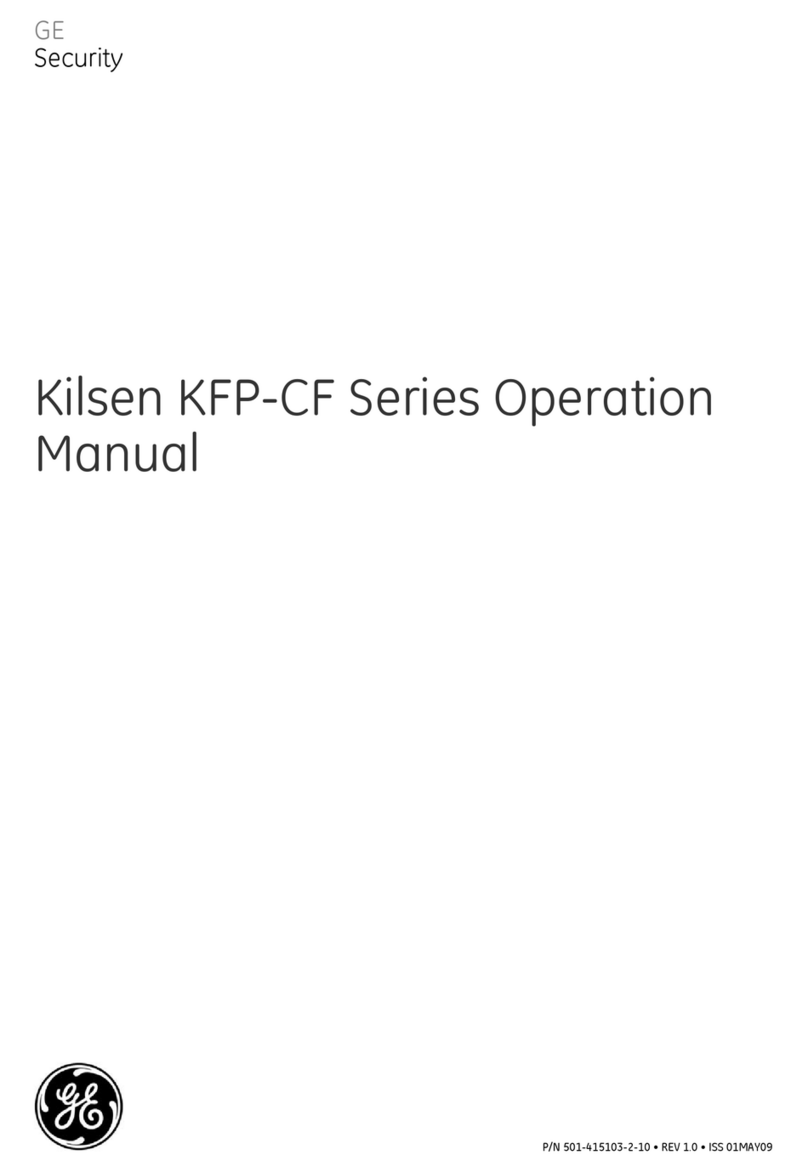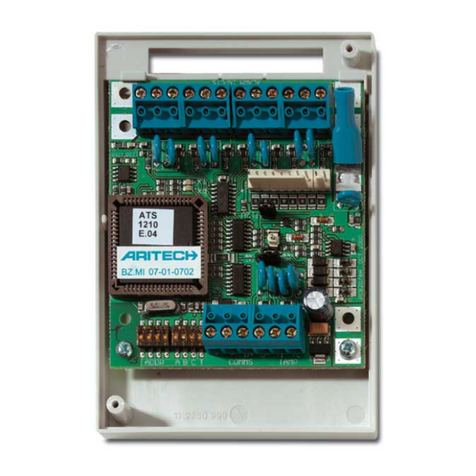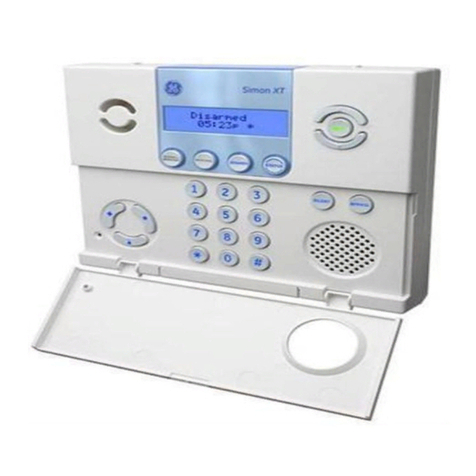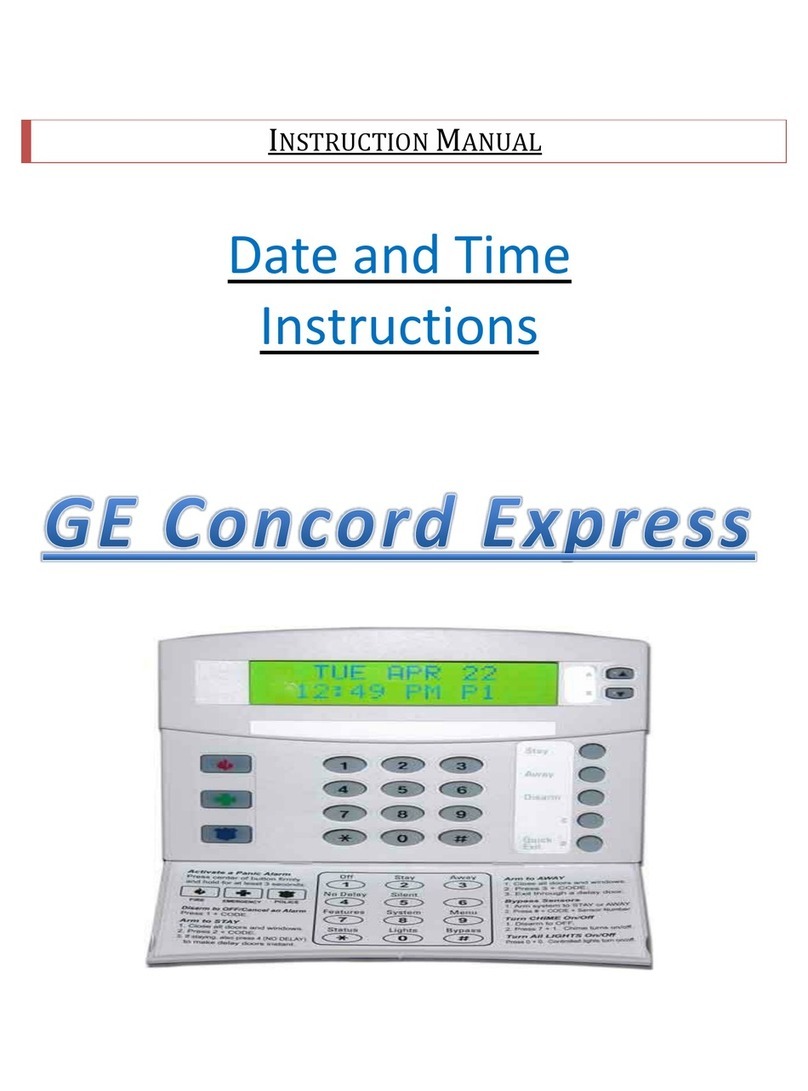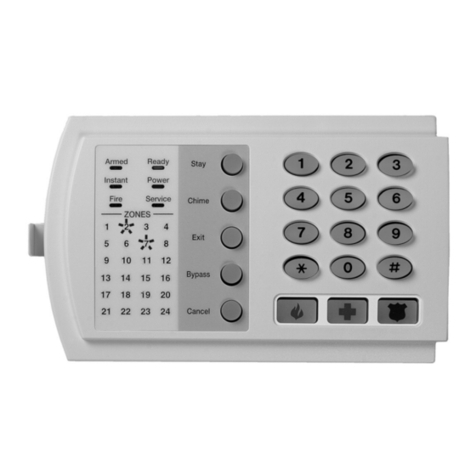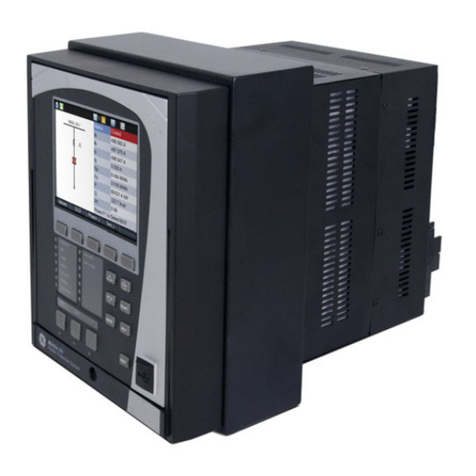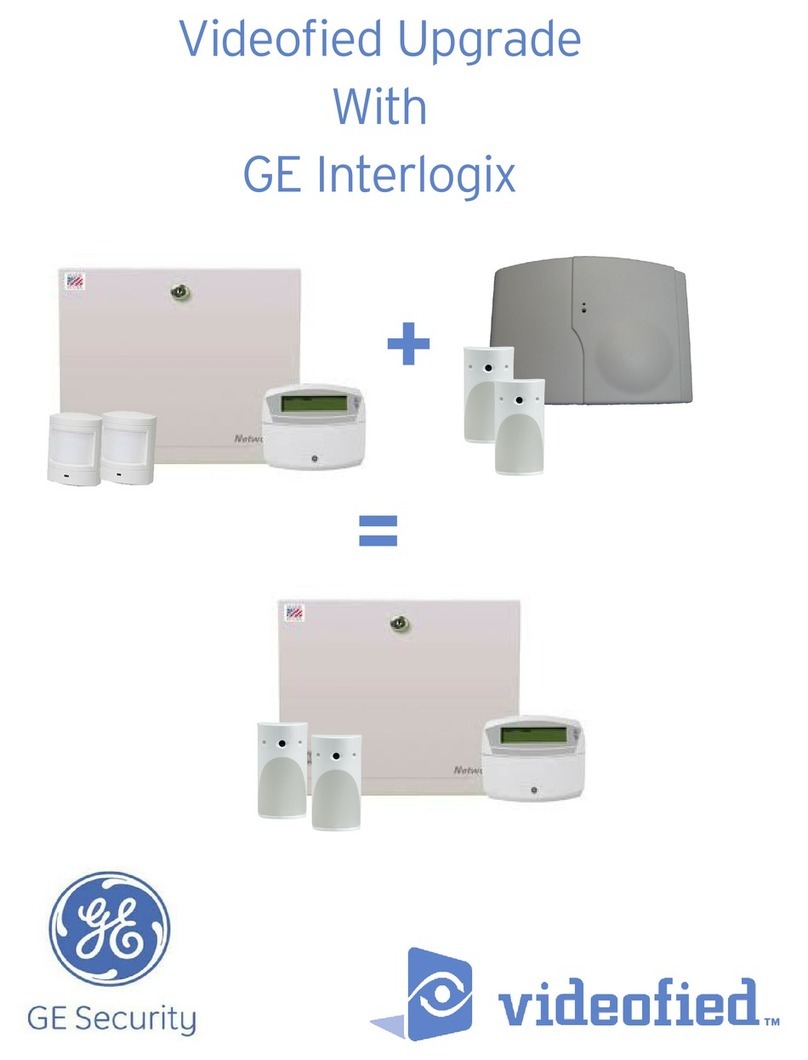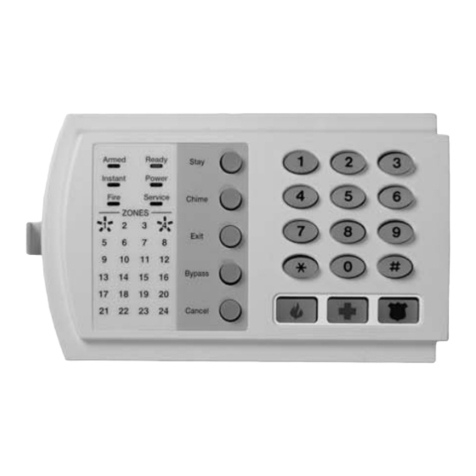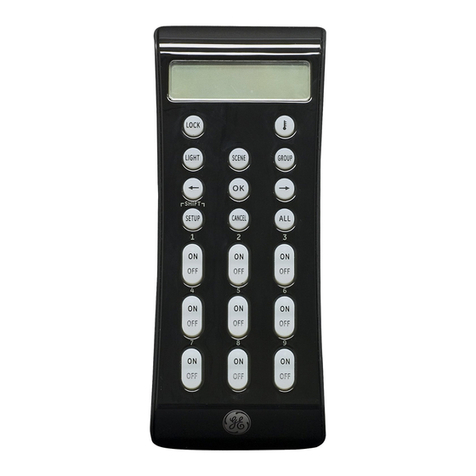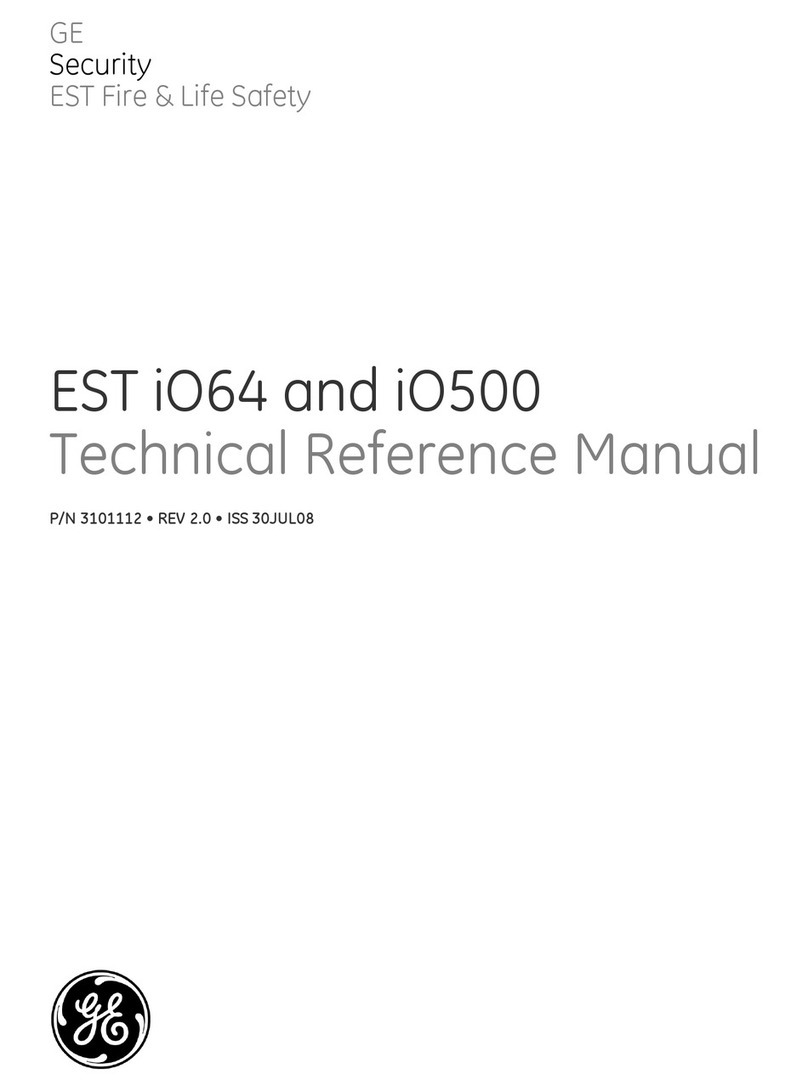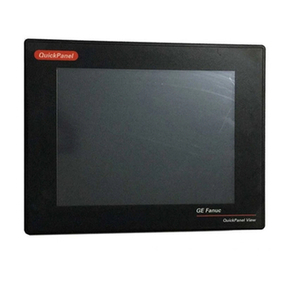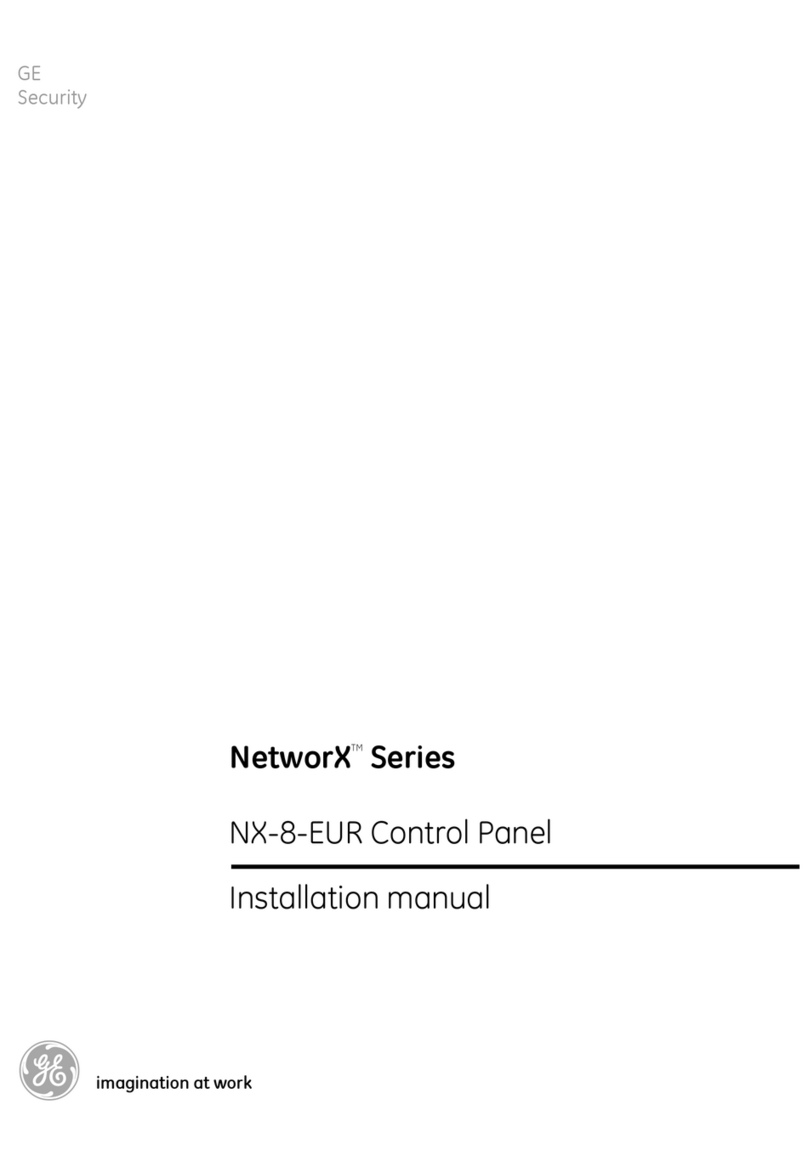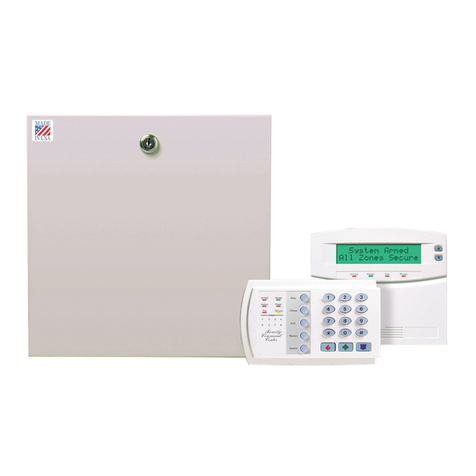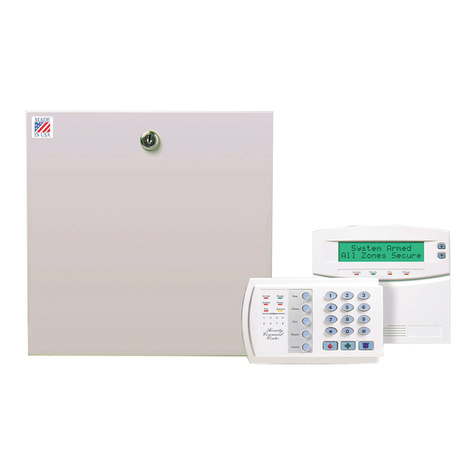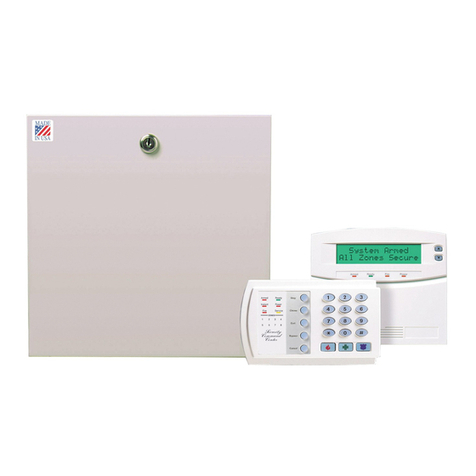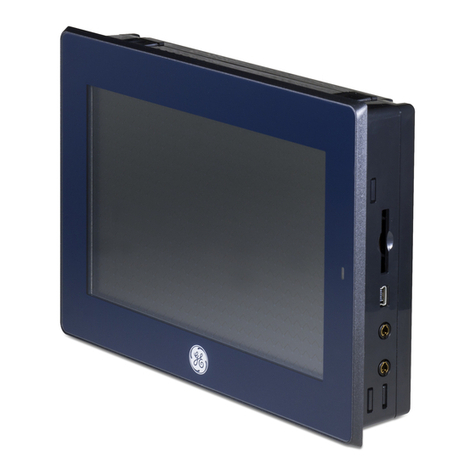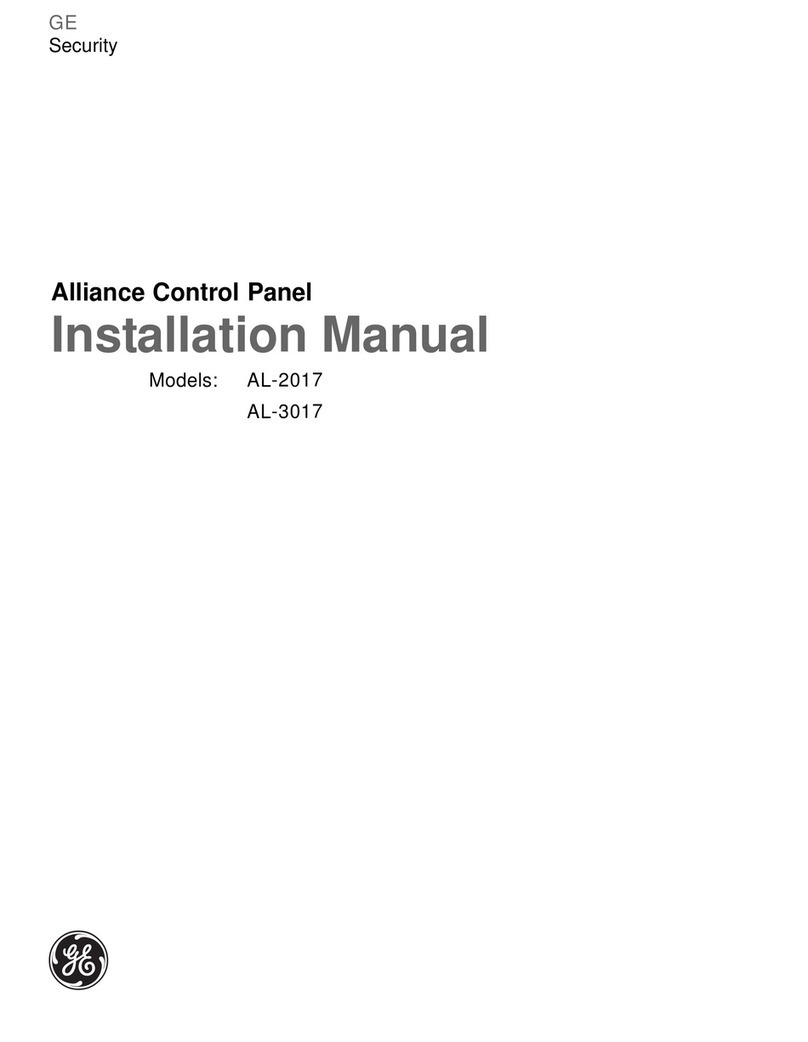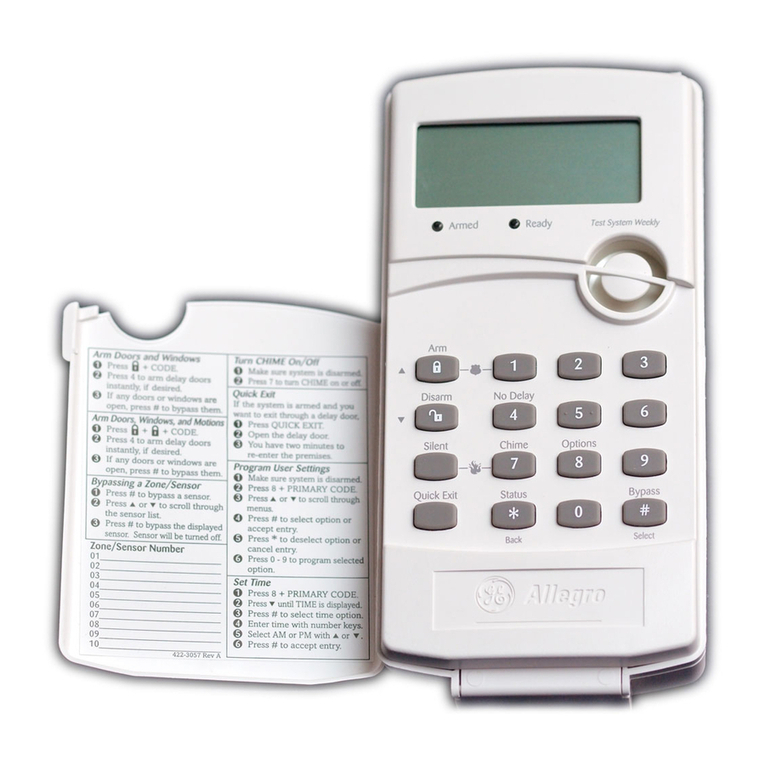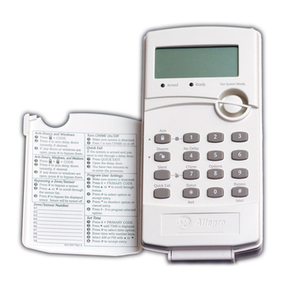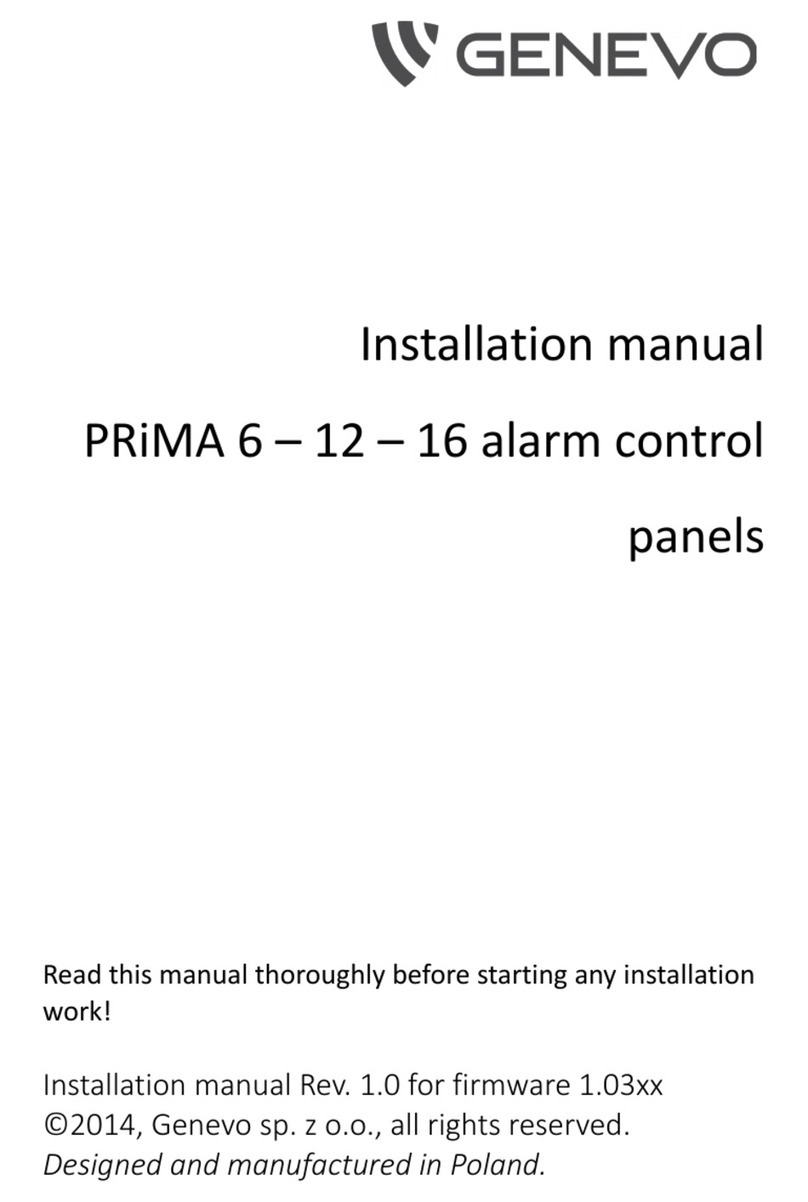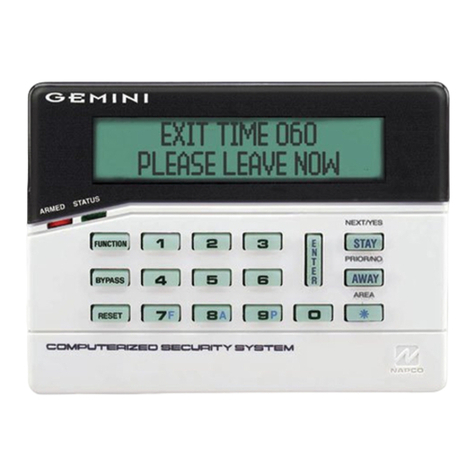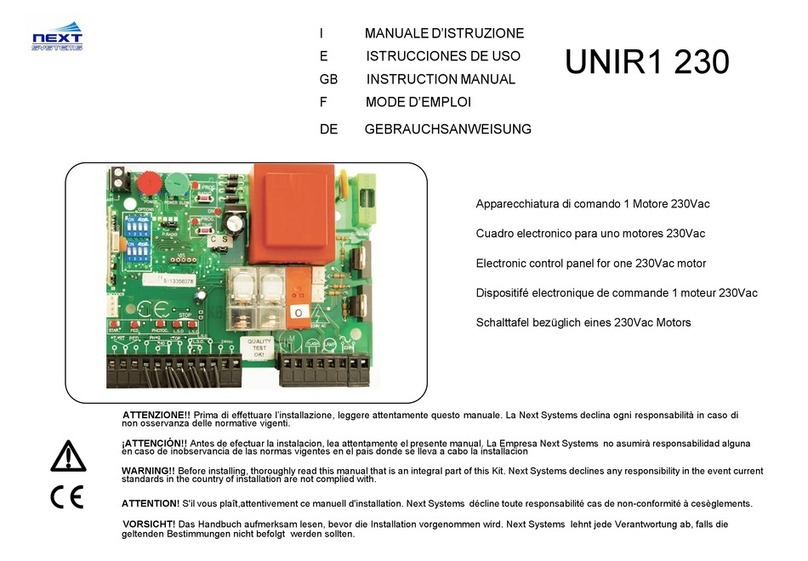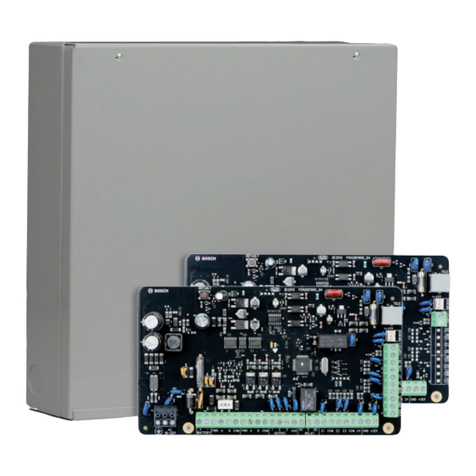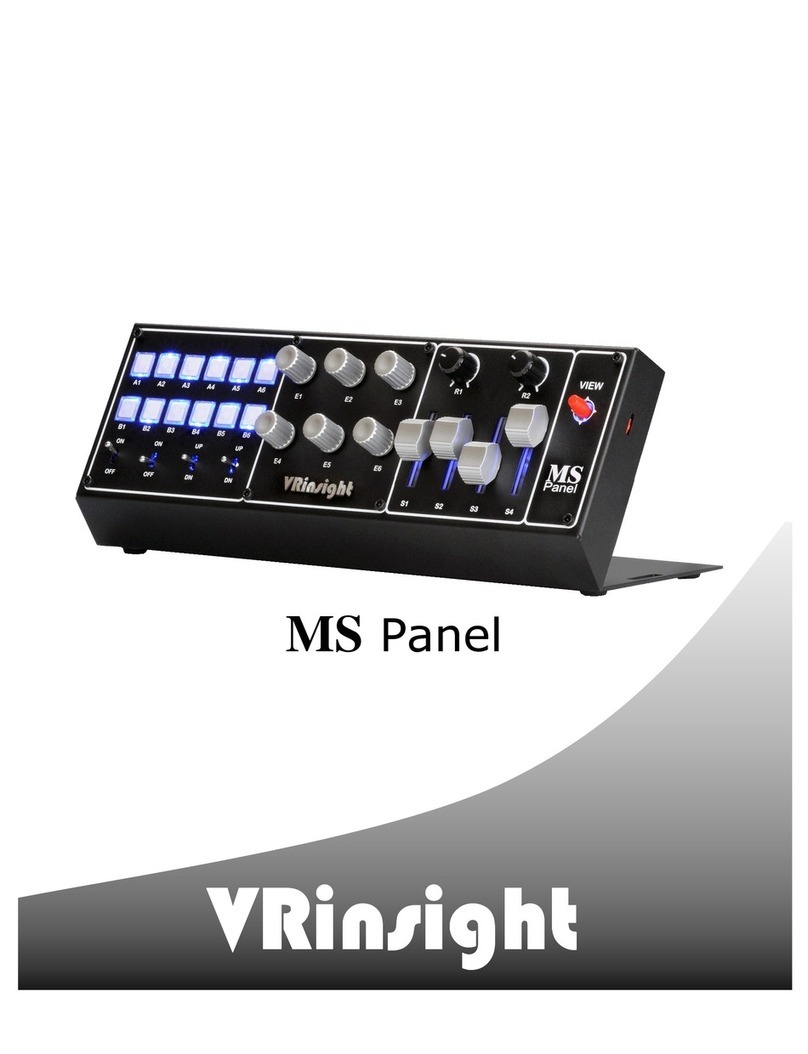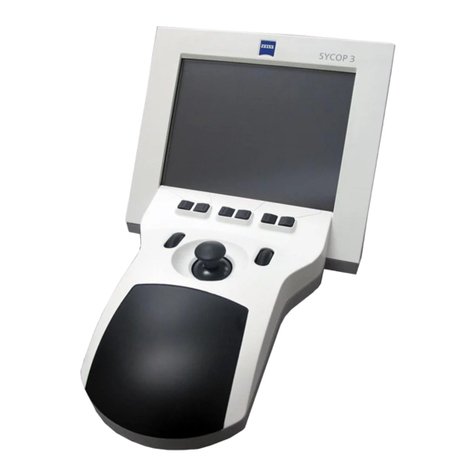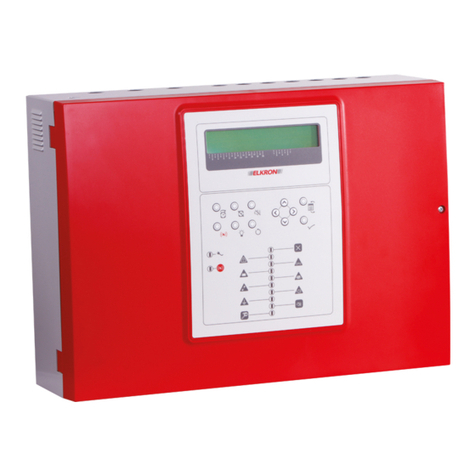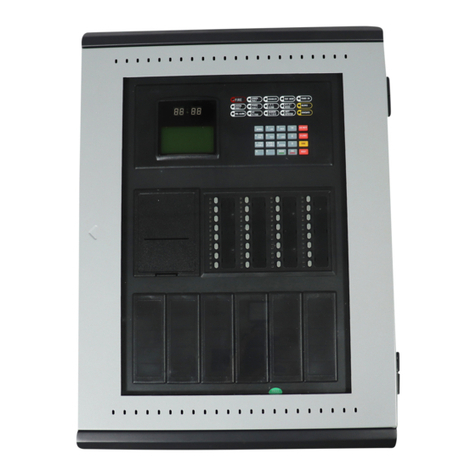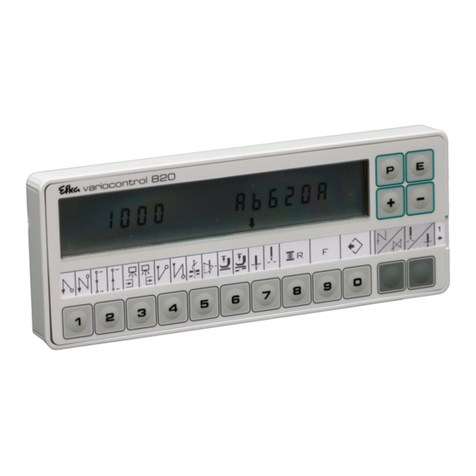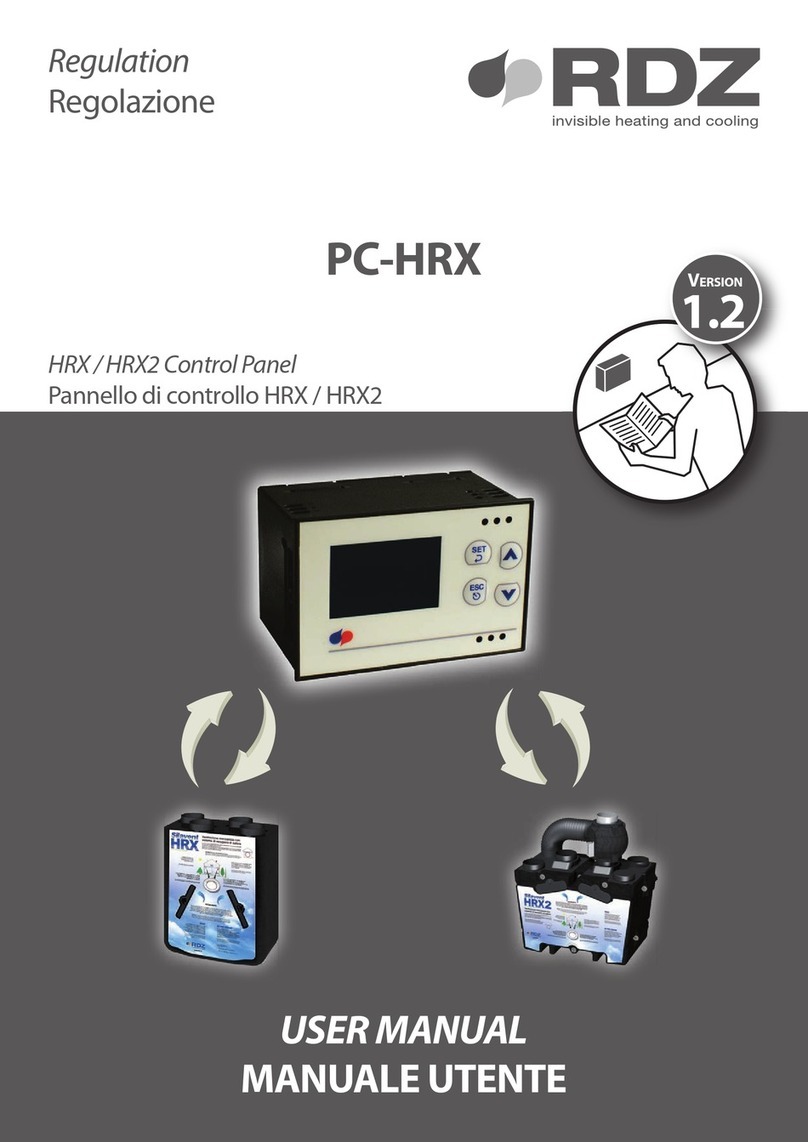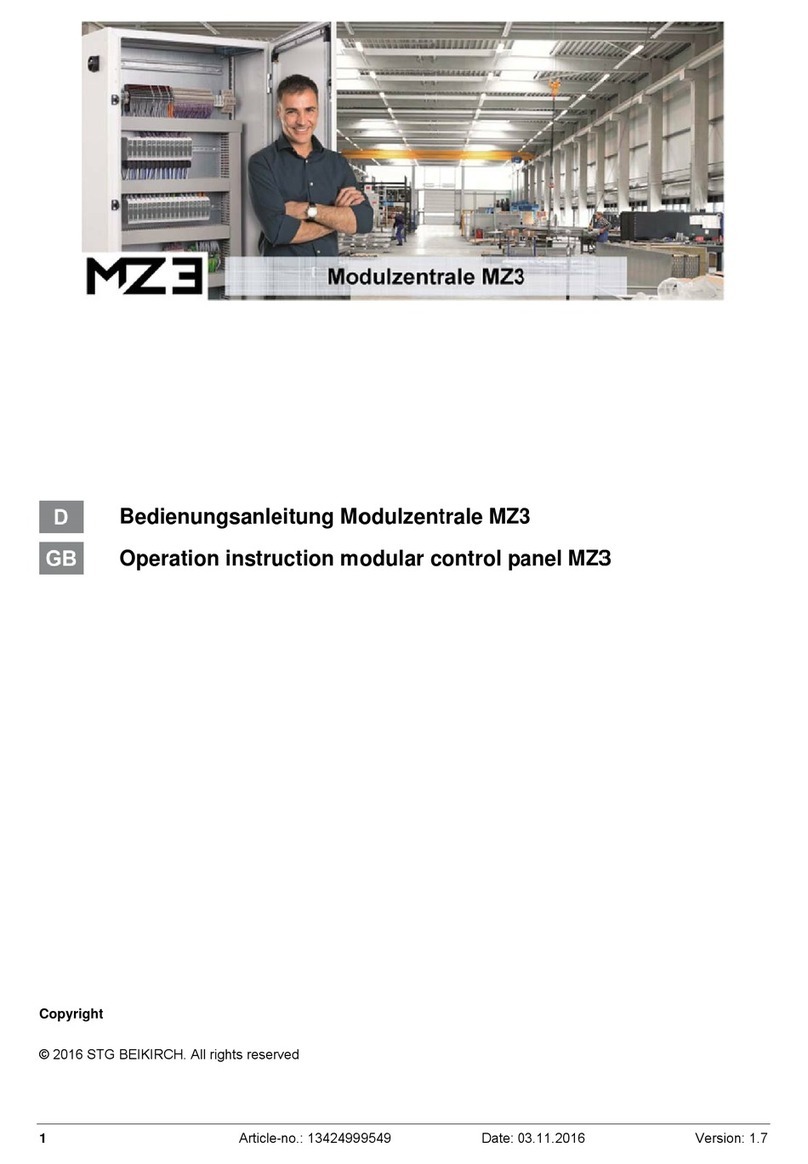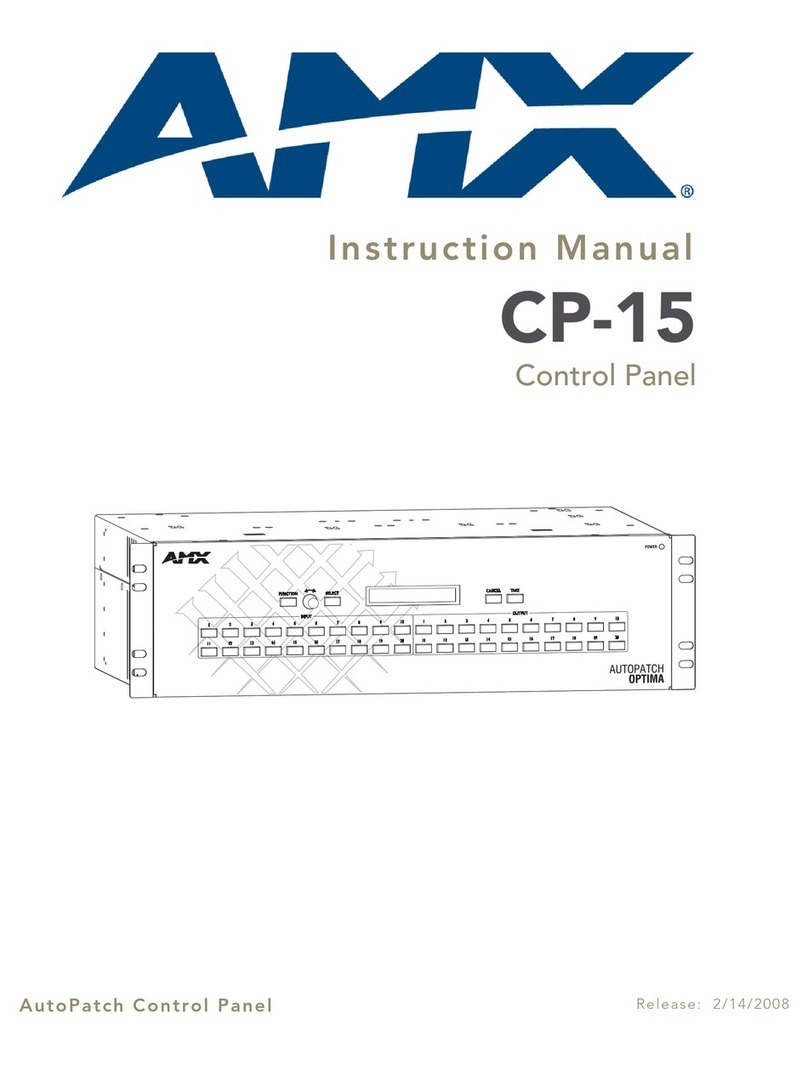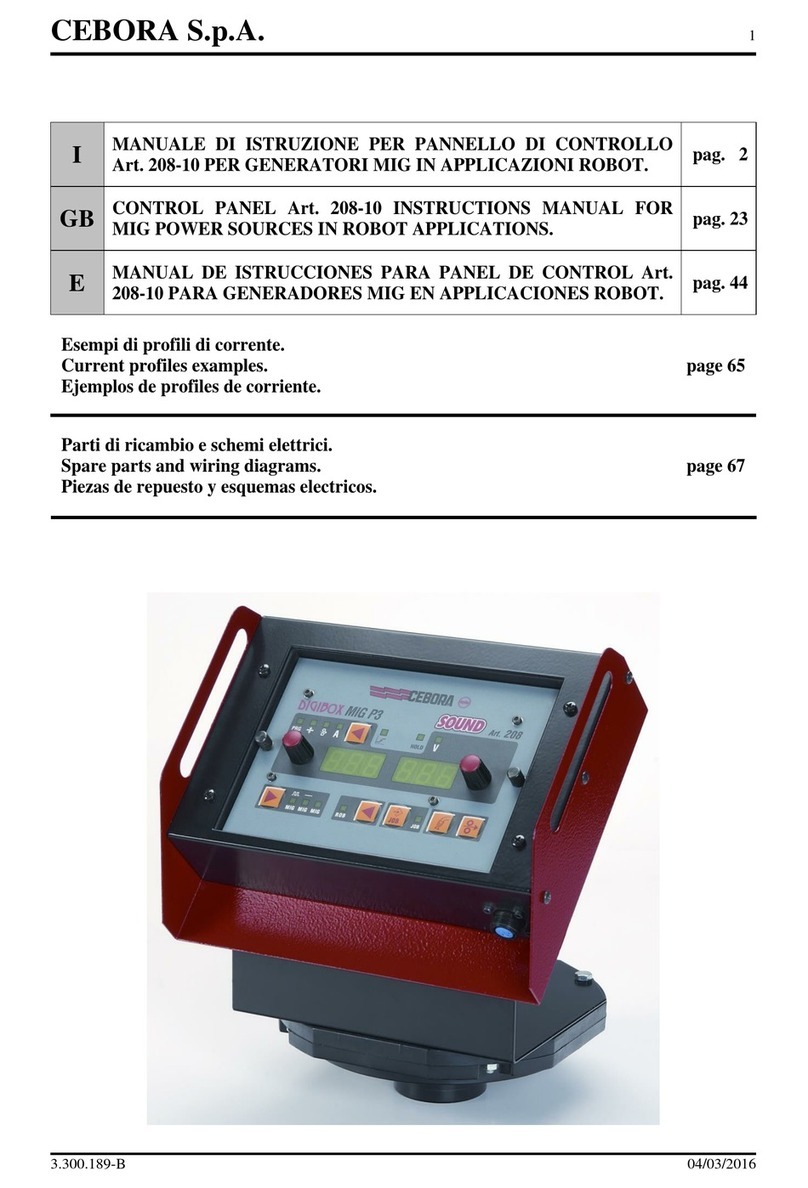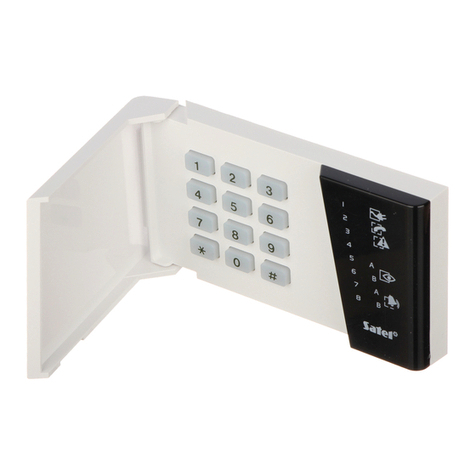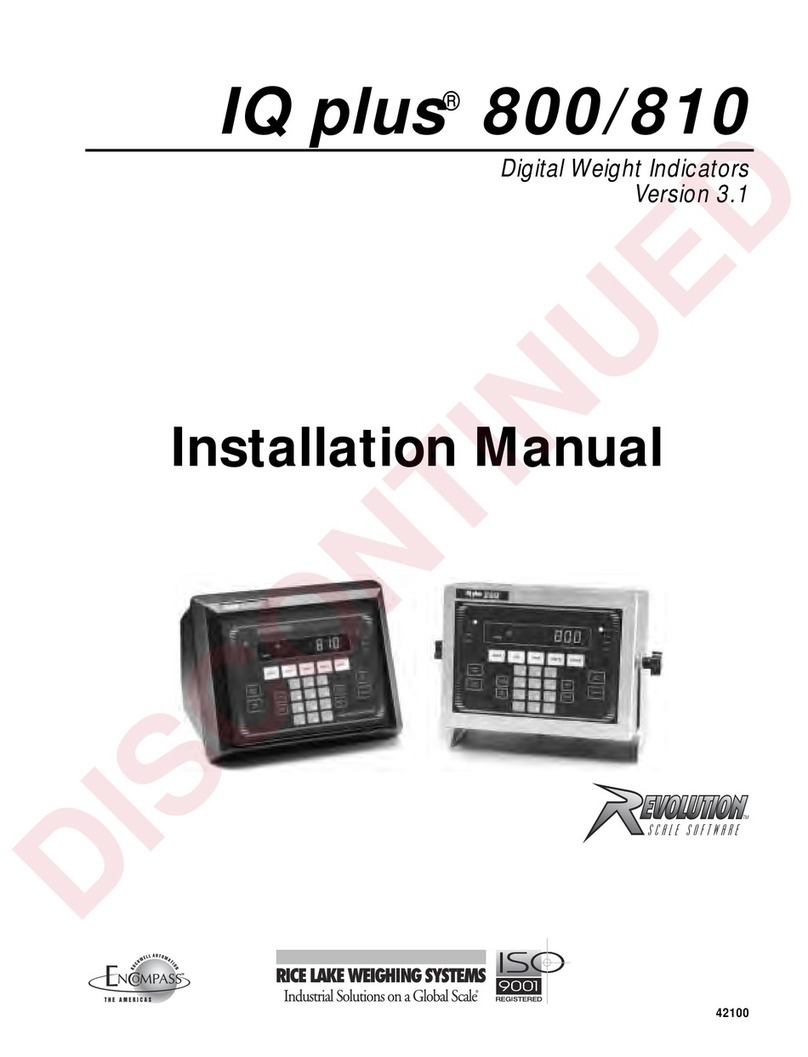
8 NX-4V2 Control
LED ATTRIBUTES IF LED 8 IS OFF LED ATTRIBUTES IF LED 8 IS ON
1 Reserved 1 Activate output #1
2 Arm Only 2 Activate output # 2
3 Arm Only After Close Window 3 Activate output # 3
4 Master arm/disarm (can program other codes) 4 Activate output # 4
5 Arm/disarm code 5 Arm/disarm
6 Allowed to bypass zones (see location 23) 6 Bypass Zones
7 Code will send open / close reports 7 Open / Close Reporting
8 If this LED is on, LEDs 1-7 will use the chart to the right 8 If this LED is off, LEDs 1-7 use the chart to the left
• Enter [r] [r]. This returns you back to step 2 above, where you may enter another user number to assign attributes for. You
may continue this procedure until you have assigned authority levels to all user numbers - or - you may press [#] key to exit the
Assigning Authority Level Program.
[r]-[9]-[8]
• Pressing [r]-[9]-[8] while the system is disarmed will cause the control to do a callback for a download.
• NOTE: A valid user code may be required after [
r
]-[9]-[8] if enabled in location 41, page 19.
[r]-[9]-[9]
• Pressing [r]-[9]-[9] while the system is disarmed will cause the control panel to seize the phone line for a download.
• NOTE: A valid user code may be required after [
r
]-[9]-[9] if enabled in location 41, page 19.
VII. PROGRAMMING THE CONTROL
ENTERING THE PROGRAM MODE
To enter the Program Mode, press [r]-[8]. At this time, the five function LEDs (Stay, Chime, Exit, Bypass, & Cancel) will begin to flash.
Next, enter the "Go To Program Code" (FACTORY DEFAULT IS [9]-[7]-[1]-[3]). If the "Go To Program Code" is valid, the "Service" LED
will flash and the five function LEDs will illuminate steady. You are now in the Program Mode and ready to select the module to program.
SELECTING THE MODULE TO PROGRAM
Since all modules connected to the NX-4V2 are programmed through the keypad, the module you are programming should be the first
entry. To program the NX-4V2 Control Panel, enter [0]-[#]. The [0] is the module number of the control and [#] is the entry key. Other
module entry numbers can be found in their corresponding manuals.
PROGRAMMING A LOCATION
Once the number of the module to be programmed has been entered, the "Armed" LED will illuminate, indicating it is waiting for a
programming location to be entered. Any location can be accessed by directly entering the desired programming location followed by[#].If
the location entered is a valid location, the "Armed" LED will extinguish, the "Ready" LED will illuminate and the binary data for the first
segment of this location will be shown by the zone LED's. While entering new data, the "Ready" LED will begin flashing to indicate a data
change in process. The flashing will continue until the new data is stored by pressing [r]. Upon pressing [r], the keypad will advance to
the next segment and display its data. This procedure is repeated until the last segment is reached. Pressing the [#] key will exit fromthis
location, and the "Armed" LED will illuminate again waiting for a newprogramming locationto be entered. Ifthe desiredlocationisthenext
sequential location, press the [POLICE] key. If the previous location is desired press the [FIRE] key. If the same location is desired press
the [MEDICAL] key. To review the data in a location, repeat the above procedure, pressing [r] without any numeric data entry. Each time
[r] is pressed, the programming data of the next segment will be displayed for review.
EXITING A LOCATION
After the last segment of a location is programmed, pressing [r] will exit that location, turn the "Ready" LED off and the "Armed" LED on.
The [r] must be pressed or the data will not be saved. To exit before the last segment, press [#]. As before, you are now ready to enter
another programming location. If an attempt is made to program an invalid entry for a particular segment, the keypad sounder will emit a
triple error beep (beep, beep, beep), and remain in that segment awaiting a valid entry.
EXITING THE PROGRAM MODE
When all the desired changes in programming have been made, it is time to exit the program mode. Pressing [Exit] will exit this
programming level, and go to the "Select a Module To Program" level. If no additional modules are to be programmed, pressing [Exit]
again will exit the program mode. If there is a module to be programmed, it may be selected by entering its address followed by [#] (see
"Selecting the Module To Program" above). The procedure for programming thesedevices isthe same as for the controlpanel,exceptthe
locations will be for the module selected.
WWW.DIYALARMFORUM.COM
